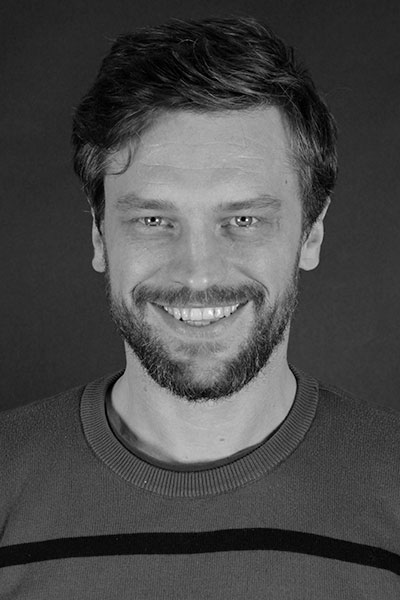Graphic technology is a part of technical sciences which implements research advances in the various fields including computer science and material sciences. This fact leads to a specific approach to the research as one must always have in mind the two way communication between image data manipulation in the digital and materials interaction in the printing process and product finishing. The aim of this research proposal is to develop the model for production efficiency increase and functionality of packaging. This goal will be achieved by conducting the activities which could be divided in four main groups:
about
Development of the model for production efficiency increase and functionality of packaging
- development and evaluation of the grey colour replacement (GCR) method
- development of the method for implementing digital watermark as a mean to enable graphic reproduction protection
- characterization of graphic materials and development of functional coatings and their impact on the multicolour graphic reproduction
- development and evaluation of the mathematical model which will make connection between influence of the digital image modulation and material's characteristics and prints refining on it's mechanical properties and visual perception.
Motivation
Majority of the young scientists find it challenging to come out of the shadow of their senior colleagues. This project supported by Croatian Science Foundation gave us the opportunity to work as a team of young researchers. As a group of researchers which come from various expertise it is exciting to collaborate, see different views and approaches to the same problem. We see the challenges lying in front of us and are sure that crossing the obstacles will bring every team member forward on a path of scientific life and in the same time form a multidisciplinary research force able to challenge issues in the graphic materials and, especially, packaging production.
Beside personal motives, as a part of the graphic communications/printing industry, we expect to reach the main goals of the project - increase of the packaging production competitiveness and increase packaging functionality by implementing protecting elements in the image and material refinement to increase its mechanical properties and visual perception.
Beside personal motives, as a part of the graphic communications/printing industry, we expect to reach the main goals of the project - increase of the packaging production competitiveness and increase packaging functionality by implementing protecting elements in the image and material refinement to increase its mechanical properties and visual perception.
NEWS
Scientific-professional meeting held
February 8, 2023
On Wednesday, 1 February 2023 the meeting was held. In the first part we presented results of the work conducted during the research in the project. After the results, reputable firms presented trends in their production in the field of graphic design, packaging and book production. The meeting was held onsite and online with over […]
Scientific-professional meeting – presentation of project results
January 24, 2023
Presentation of the project M.E.G.A. (https://magrf.grf.hr/) results will be on Wednesday, 1 February 2023, at University of Zagreb Faculty of Graphic Arts. The meeting is divided in two parts. First part includes presentation of the project results and the second includes presentation of industry and their views on present and future in printed media. The […]
“PDC Blaž Baromić” conference held
January 9, 2023
On December 16th, 2022, Tomislav Cigula of the M.E.G.A. team presented a paper titled “DFT watermark detection depending on the nanocomposite coatings and accelerated ageing” at the PDC Conference Blaž Baromić. The conference was held at the Faculty of Graphic Arts, Zagreb. You can find more details about the presented paper here.
“Packaging and Labels” conference held
November 28, 2022
On November 10th, 2022, the conference Packaging and Labels was held in Antunović Hotels in Zagreb. More than 130 people joined the venue, and Tomislav Cigula, a member of the M.E.G.A. team, participated in the conference with the presentation titled “Nanocomposite varnishing and watermarking for packaging security”. More information about the held conference can be […]
Team
Project Leader
"Valid criticism does you a favor."
by Carl Sagan
Junior Researcher
Senior Researcher
Learning curve ranger with one and a half foot on the ground
Junior Researcher
Jack of several trades, trying to master at least one
Senior Researcher
Senior Researcher
"As far as the laws of mathematics refer to reality, they are not certain, and as far as they are certain, they do not refer to reality."
by Albert Einstein
by Albert Einstein
Senior Researcher
Publications
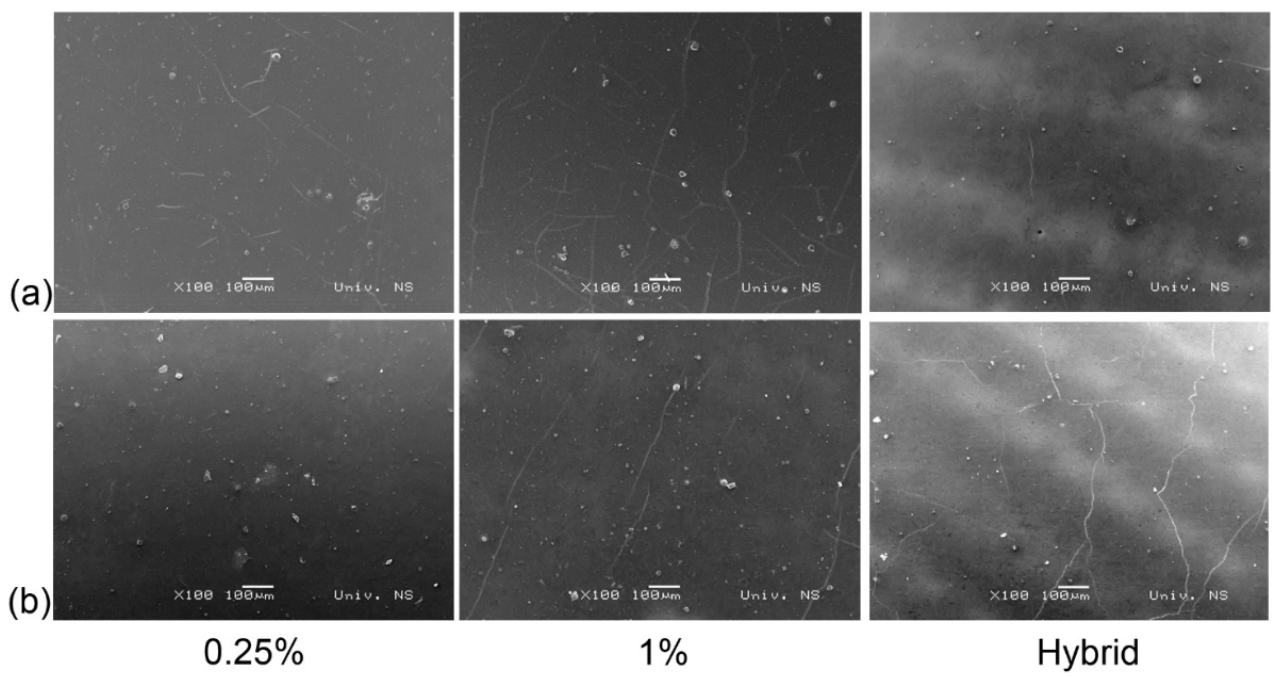
Providing Antimicrobial Properties to Cardboard Food Packaging by Coating with ZnO, TiO2, and SiO2—Water-Based Varnish Nanocomposites
Packaging acts like a bond between visual communication and production technology. Packaging material is often coated to enhance visual appearance and some protective features. The COVID pandemic changed consumers’ behavior and understanding of the importance regarding the antimicrobial properties of goods that come in contact with hands. The aim of this research is to investigate and determine the antimicrobial properties of nanocomposite coatings which include nanosized zinc oxide (ZnO), titanium dioxide (TiO2), and silicon dioxide (SiO2). For the purpose of this research, a lithographic printed packaging was coated with a nanocomposite composed of flexographic water-based varnish with i...
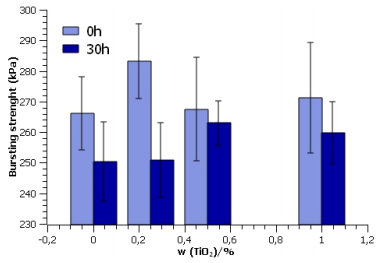
Influence of Light Induced Accelerated Ageing on Surface Properties of Cardboard Packaging Coated by TiO2 Nanocomposites
Although the primary role of packaging is to protect its content, it also acts as the carrier of both relevant information and visual identity. To enhance its properties, packaging materials are often coated with material which could provide barrier against chemicals, atmospheric conditions, or electromagnetic radiation. This paper focuses on the change of surface properties, i.e., wetting of a coated cardboard surface when packaging material is exposed to light induced accelerated ageing....
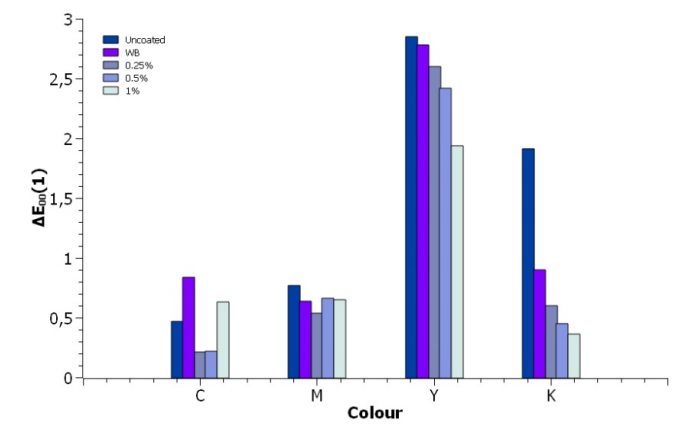
Lightfastness of Litographic Primary Colours Coated With Nanocomposites Composed of TiO2 and Water-Based Varnish
The UV radiation causes inks to fade. The ink fading will lead to the degradation of the visual appearance of printed imprints making them less attractive to the user. To deal with this that phenomenon, one of the solutions is to create a coating that could challenge these issues. In order to create efficient protective coating against UV induced degradation, nano scaled titanium dioxide (TiO2) was added to the commercial water-based varnish. To determine influence of the amount of TiO2, was homogenized in various weight ratios. The prepared nanocomposites were applied onto offset (lithography) prints made in accordance with Fogra PSO, i.e. ISO 12647-2:2013 on gloss coated paperboard. The sa...
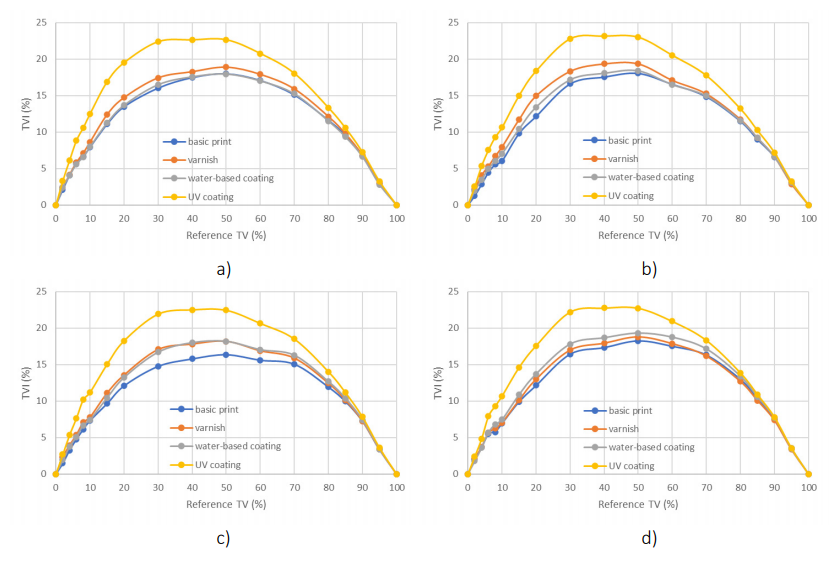
Coatings in Graphic Industry
Contrary to the negative predictions, the graphic arts industry keeps continuing its growth. The modern world is transferring information through digital platforms leading to decrease of the serial publications on paper (newspaper, magazines etc). But on the other hand, packaging industry is increasing its revenue by high numbers. In the same way as for the whole industry, many predicted that paper use will also decrease, as for a long period of time (still partly present) paper was thought of as being killer of trees. Today, along with new findings, paper is becoming more popular with EU Commission banning single use plastics. Paper as a substrate is becoming popular in packaging industry, ...
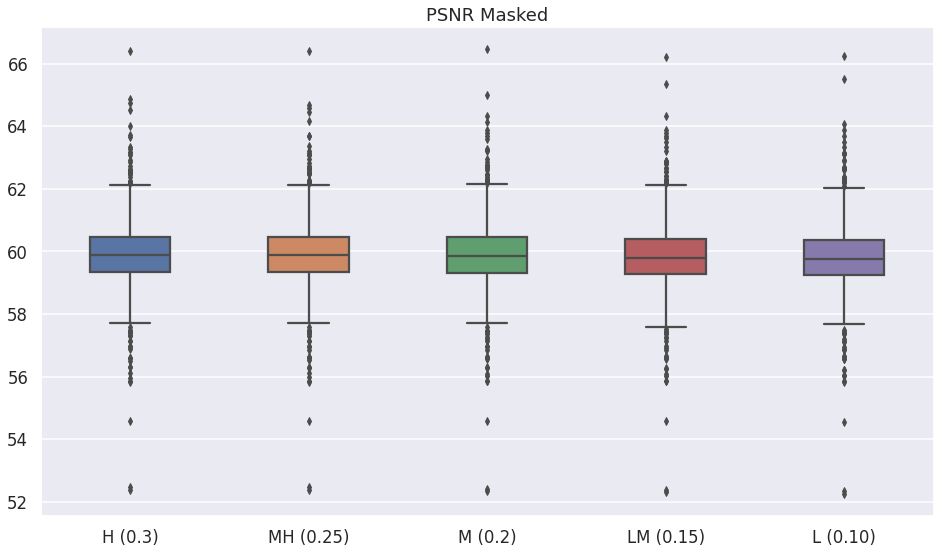
Low-Frequency Data Embedding for DFT-Based Image Steganography
As sharing digital media is getting more prominent, there has been a rise in the development of techniques for protecting digital media against misuse. However, the amount of such techniques has been less prominent for printed goods. The data hiding method presented in this paper is suited for the print domain. The method uses the Discrete Fourier Transform to embed data into images and Gray Component Replacement to maintain high image quality by masking embedding artifacts. This research examines whether the method's performance can be optimized using low-frequency ranges for embedding. The aim is to evaluate the usage of low-frequency ranges in order to achieve higher robustness. Different...

Effect of grey component replacement processing and varnishing on the light fastness of colours on cardboard prints
The visual appearance of packaging is one of its most important features. Electromagnetic irradiation causes a change in colour and often leads to colour fading (ie, to diminished visual appearance of a printed product). This research study aimed to determine the combined effect of grey component replacement image processing and varnishing on the protection of prints' appearance when exposed to accelerated ageing...

Robust DFT watermarking method with gray component replacement masking
The demand for security of shared digital and printed images is increasing year after year. There is a need for a robust watermarking scheme capable of offering high detection rates for very aggressive attacks, such as a print-scan process. However, high robustness of the watermark method usually leads to perceptible visual artifacts. Therefore, in this paper, a novel DFT watermarking method with gray component replacement (GCR) masking is proposed...
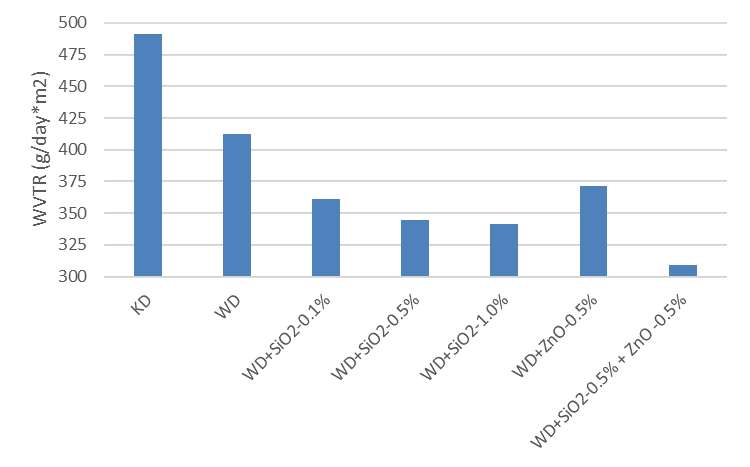
Modulation of water based commercial varnish by adding ZnO and SO2 nanoparticles to enhance protective function on printed packaging
The packaging sector of graphic industry is continuosly growing and developing in terms of packaging function used materials and production technology. The aim of this paper was to evaluate modification of commercial water-based varnish by determining its protective properties regarding colour degradation as well as barrier properties. For that purpose a set of composite coatings of different composition was prepared and applied onto cardboard prints. The prepared samples were characterized by measuring CIE L *a*b* colour density and water vapour transfer rate before and after accelerated ageing. Results showed that applying prepared nanocomposite coatings do not cause significant colour...
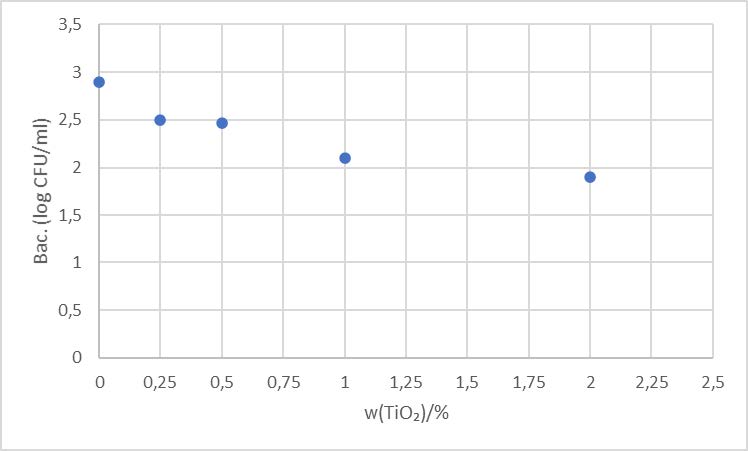
ANTIMICROBIAL PROPERTIES OF TiO2 NANOCOMPOSITE COATING
Packaging plays important part of the visual communication and in consumer’s choice of purchasing goods. To enhance visual appearance, packaging material is often coated. Beside enhancement of visual appearance, additional coating often improves other packaging properties. The COVID-19 pandemic stressed the importance of the antimicrobial properties of goods that encounter consumers. During purchasing, consumer first meets the packaging making it significant in the consumer’s protection. The aim of this research is to determine antimicrobial properties of nanocomposite coating which includes nanosized TiO2. For the purpose of the research a set of offset cardboard prints was coated with ...
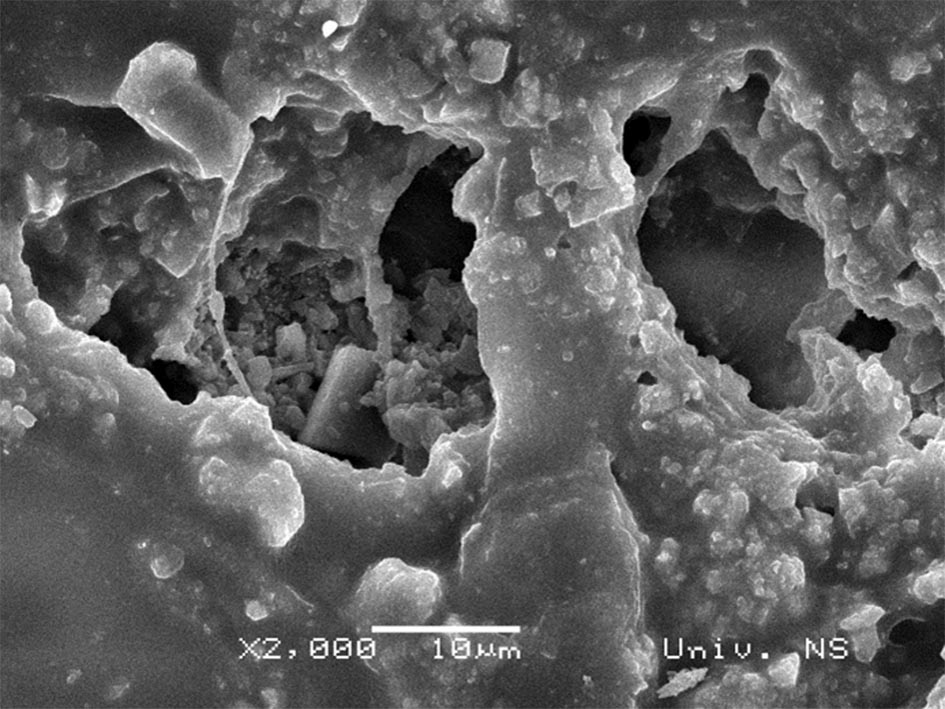
Lightfastness, surface and interfacial properties of colour-printed paper substrates coated with PCL/ZnO and PCL/TiO2 nanocomposites
Packaging production often includes varnishing to increase printed information durability. In addition, as some materials cannot be recycled (which could be the case in food packaging), the use of biobased materials enables waste to be composted. This paper proposes biopolymer-based nanocomposite coating which could be applied onto the printed paper substrate to protect it and increase its barrier properties to the water vapour. For the purpose of the research, two sets of the nanocomposite coatings were prepared by mixing polycaprolactone (PCL) base with ZnO or TiO2 nanoparticles in different weight concentrations. The prepared nanocomposites were applied onto the printed samples and artifi...
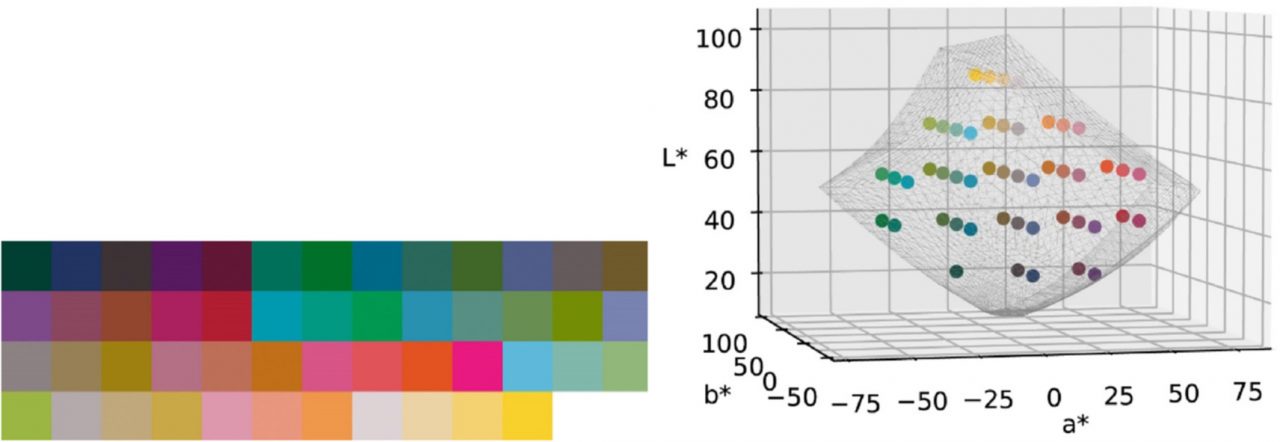
Color reproduction on varnished cardboard packaging by using lower ink coverages due to the gray component replacement image processing
Even in these challenging times, cardboard packaging industry is increasing its revenue with stable annual increase prediction, but customers are increasing demands on the packaging with respect to environmental protection, attractiveness, and branding. This article aims to determine the influence of image processing in terms of gray component replacement and overprint varnishing on the color reproduction on a cardboard packaging material. A test chart with tertiary colors was defined and modified by different gray component replacement levels. It was printed in accordance with ISO norm on coated and uncoated cardboard and finished by overprinting water based, offset, and UV varnish. The pre...
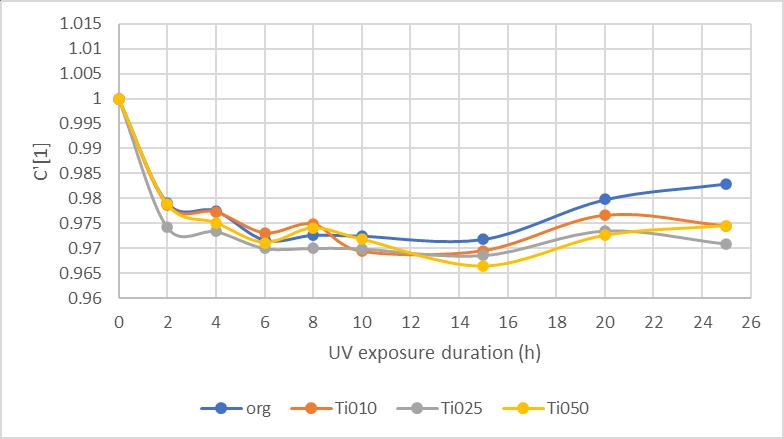
PCL-TIO2 Nanocomposite to Improve Ageing of Offset Prints
UV radiation or sunlight can affectthe printed sample by fading the ink surface and therefore the product losses it's decorative purpose and becomes less desirable to the customer. To create the efficient protective coating,titaniumdioxide(TiO2)will be used as a well-knowncompound that should lower the effects of UV radiation. TiO2should lower the colour fade after UV radiation and this will be determined by densitometric and colorimetric (CIE L*a*b*)measurements. In addition, measurement of print gloss will also be conducted to evaluate visual appearance of the sample. Biopolymer Polycaprolactone (PCL) wast...
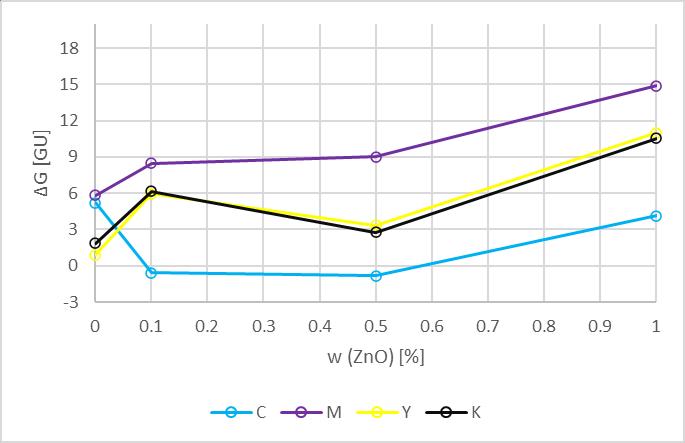
The Influence of PCL-ZNO Coating Composition on Coated Offset Cardboard Prints
The most significant printing branch in these days is packaging printing. Packaging must primarily preserve the product from damaging, but atthe same time must attract the consumersto be picked up from the shelf in the store. To ensure protective and aesthetic role of the packaging the prints are commonly coated with varnishes which will improve visual, mechanical, surface, and optical properties. In this paper a coating composed of polycaprolactone (PCL) and nanoscale ZnOwas used to coat the offset prints on the cardboard. The coatingswereprepared by adding various weight amounts of the ZnO nanoparticles (weight ratios of 0.1, 0.5 and 1%) into the mixture of PCL and ethyl-acetate. The coati...
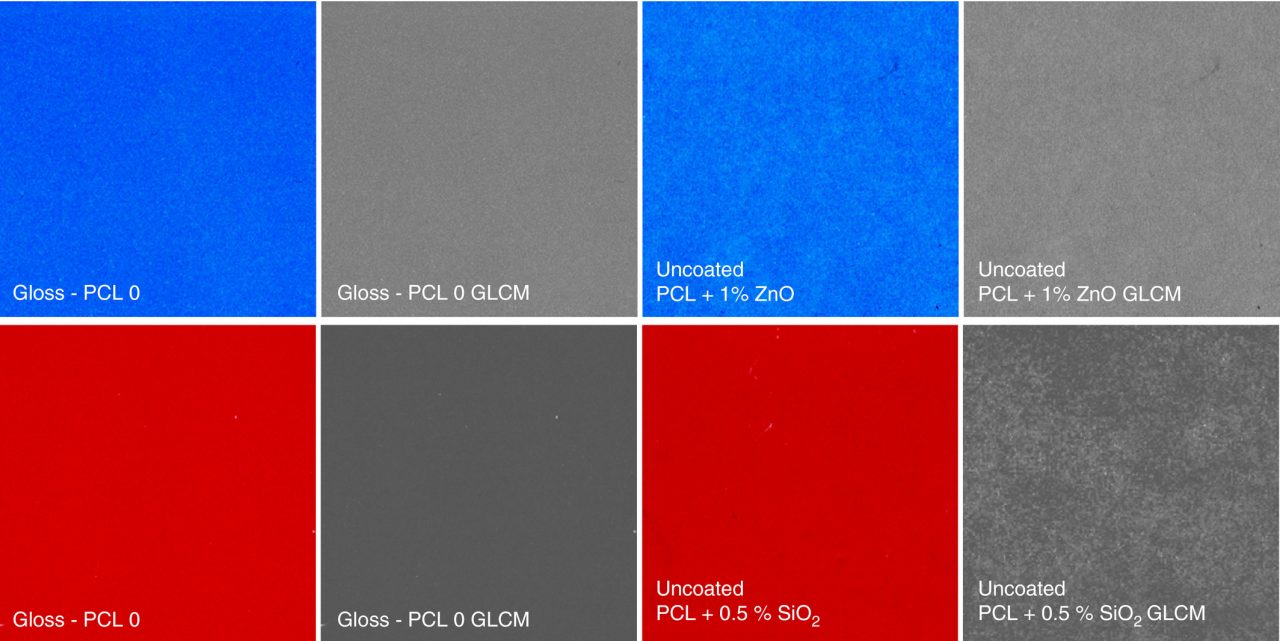
Influence on the properties of cyan and magenta offset prints
Polycaprolactone primers with zinc oxide and silicon dioxide nanoparticles for paper substrates: Influence on the properties of cyan and magenta offset prints In this research study, the applicability of polycaprolactone‐silicon dioxide and polycaprolactone‐zinc oxide coatings used as primers on papers for offset printing, was analysed. Polycaprolactone nanocomposites with different concentrations of nanoparticles were prepared […]...
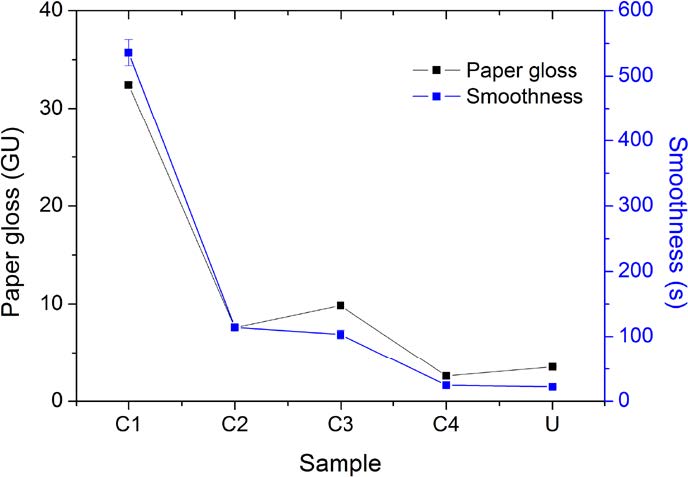
Effect of the paper surface properties on the ink transfer parameters in offset printing
Paper has a crucial impact on the qualitative properties of printed product as properties of the paper’s surface directly impact the ink transfer, consequently, basic optical properties of the print. Although same ISO paper type, papers possess variable surface properties leading to different influence on the ink transfer. The aim of this research was to analyse influence of the surface properties of the paper, including surface free energy, smoothness and gloss of some standard papers used in lithography on the ink transfer while matching the colorimetric values defined by ISO 12647-2:2013. Determination of amount of the ink transfer, optical density, mottling and colour difference of pri...
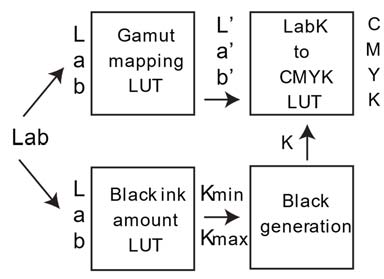
Adjustable color transformation model
Color management is an important part of the print production process. This paper presents a color transformation model which can provide all possible four-color solutions (CMYK) for a given aimed color (CIE L*a*b*). The model also allows quick adjustments of gamut mapping and total ink limit (TIL). The tests showed that the presented model is quite accurate. The model is less accurate for colors near the gamut boundary, but there is potential for improvements. Very high accuracy was achieved by avoiding gamut boundary colors. In practice, this is useful for application to image re-separation, usually with the aim of ink saving....
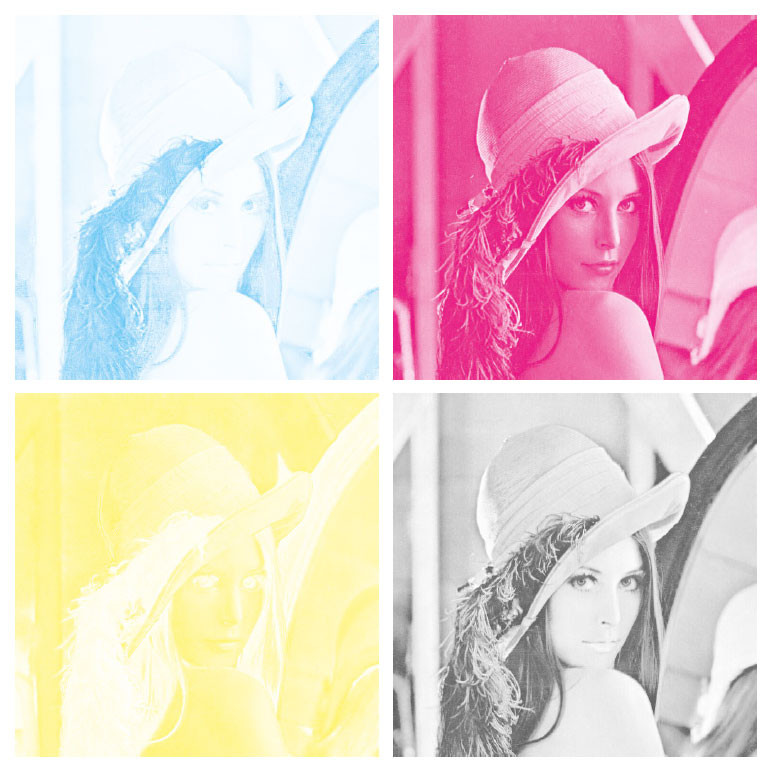
Analysis of the GCR Communication Channel For Image Steganography
Main motivation behind this investigation is to determine how and to what extend Gray Component Replacement (GCR) influences a color image. Specifically how GCR influences images in spatial domain, as well as in Fourier and Cosine domains. This is important to determine in order to develop a data hiding technique that can be used in GCR communication channel. To evaluate the influence of GCR on color images a large dataset is first converted from RGB to CMYK color space with very aggressive GCR. Then the original and the converted images are compared in Fourier and Cosine domains. The results show that the GCR communication channel has a nonlinear impact on the image that depends exclusively...
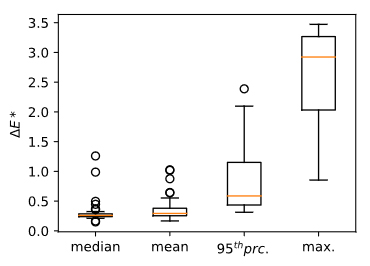
Sources of errors between color transforms
Characterization of output color reproduction devices has the purpose of ensuring accurate color reproduction. In the characterization process, two transforms are required: from device dependent colorant space to device independent color space, and in reverse direction. This paper identifies the sources of discrepancies between forward and reverse characterization models and investigates possibilities of their improvement. It is shown that lookup tables such as those used in ICC profiles inherently introduce errors near process boundaries. Partial improvements are possible by populating tables with proper values in critical regions....
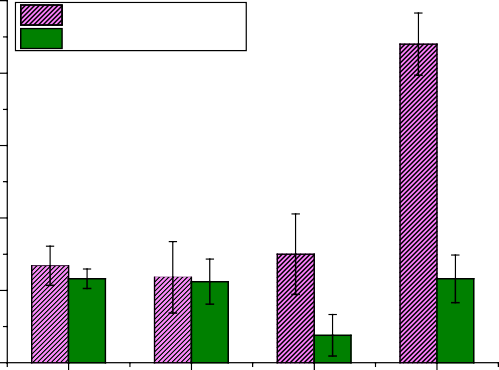
LS fitting of the material properties influencing the print quality in flexographic reproduction system
Printing quality is influenced by numerous parameters and by the material interactions in the ink- plate-substrate system. The aim of this paper is to characterize and quantify influential parameters in the flexographic reproduction system by using the method of the least squares (LS fitting). Specifically, this paper deals with influential properties of the printing plates and porous printing substrates (paper, board). Printing plate with its properties and interaction with the printing ink and substrate during the printing process affects the parameters of the print. Different properties of analysed porous substrates define properties of the print such as tonal values/dot gain and optical ...
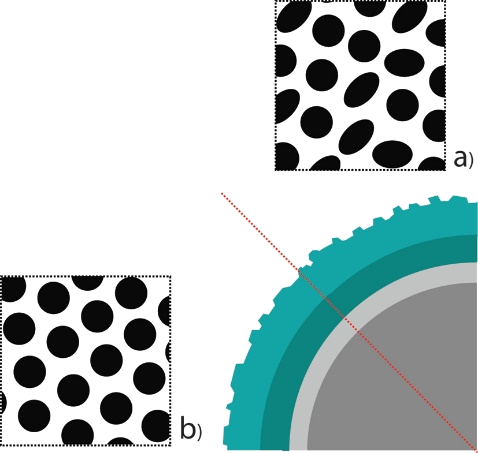
Analysis of the interactions In the “varnish – photopolymer” system
Varnishing of the printed product is often carried out by means of a photopolymer flexographic printing plate. Various types of varnishes interacting with a photopolymer material can cause chemical changes in its surface layer and affect the acceptance and transfer of varnish to the print. The aim of this paper is to describe the interactions of different types of varnishes and standard styrene-isoprene-styrene flexographic printing plate and to analyse the influence of varnishes on the surface layer of the photopolymer material. Types of varnishes used in this research are matt and gloss water-dispersive varnish, oil-based and UV varnish. Their interactions with the printing plate were anal...
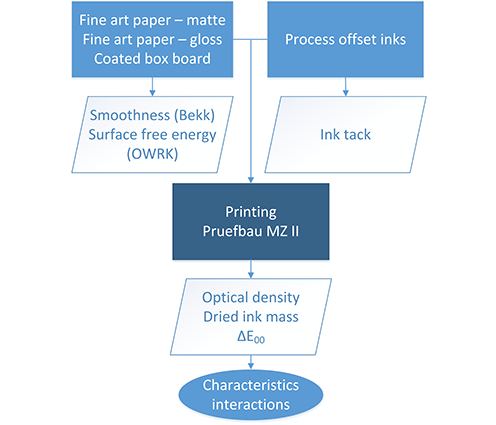
Influence of the ink and substrate properties on the ink transfer in lithography
There are many parameters influencing transfer of the printing ink onto the printing substrates. Beside printing press characteristic one of most influential parameters is interface interactions in the offset blanket-printing ink-printing substrate system. The aim of this paper is to determine printing ink and substrate properties as an influential parameter to the printing ink transfer, […]...
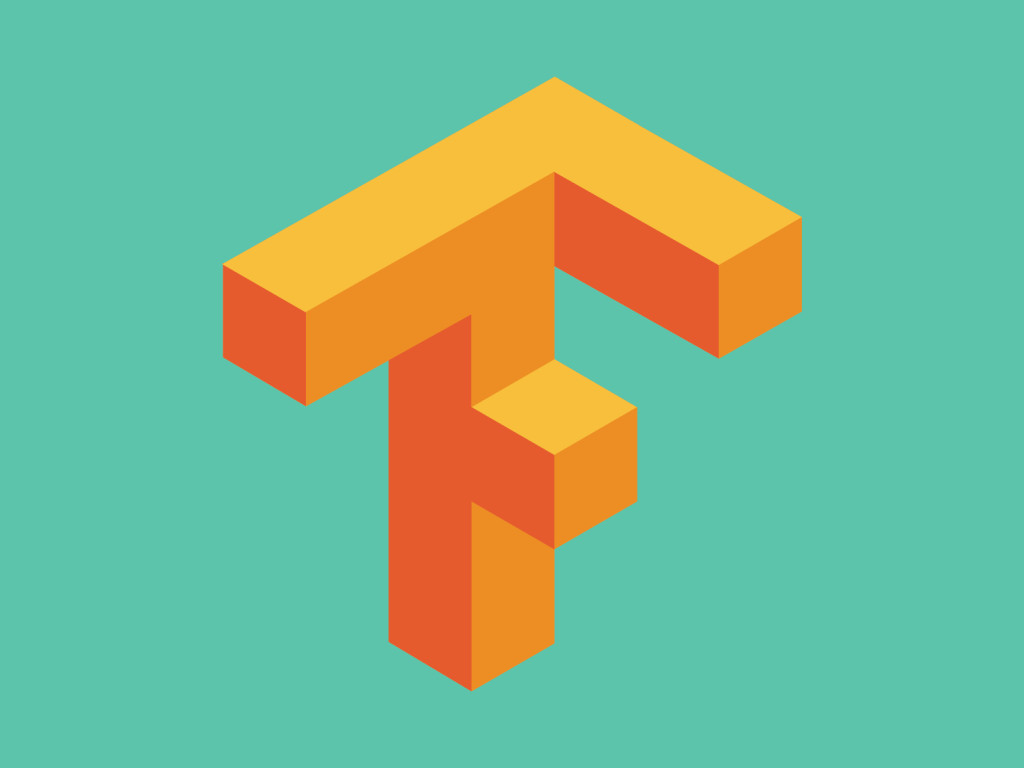
Applicability of TensorFlow environment in colorimetric analysis
TensorFlow environment gained a lot of momentum in recent years due to the increasing need for a fast, flexible and open source solution for a high performance numerical computation. Developed by Google Brain team, TensorFlow supports machine and deep learning across different industries. In this paper, TensorFlow is tested using colorimetric data and compared with […]...
Resources
| Item | Specification |
|---|---|
| GCR - Python | GitHub repository |
| Image Attacks | GitHub repository |
| GCR Model | Code, test images and results |
| GCR / DFT Model | CodeOcean repository |
Contact us
M.E.G.A Project
University of Zagreb, Facluty of Graphic Arts
+385 1 2371 080
mega@grf.hr
mega@grf.hr


